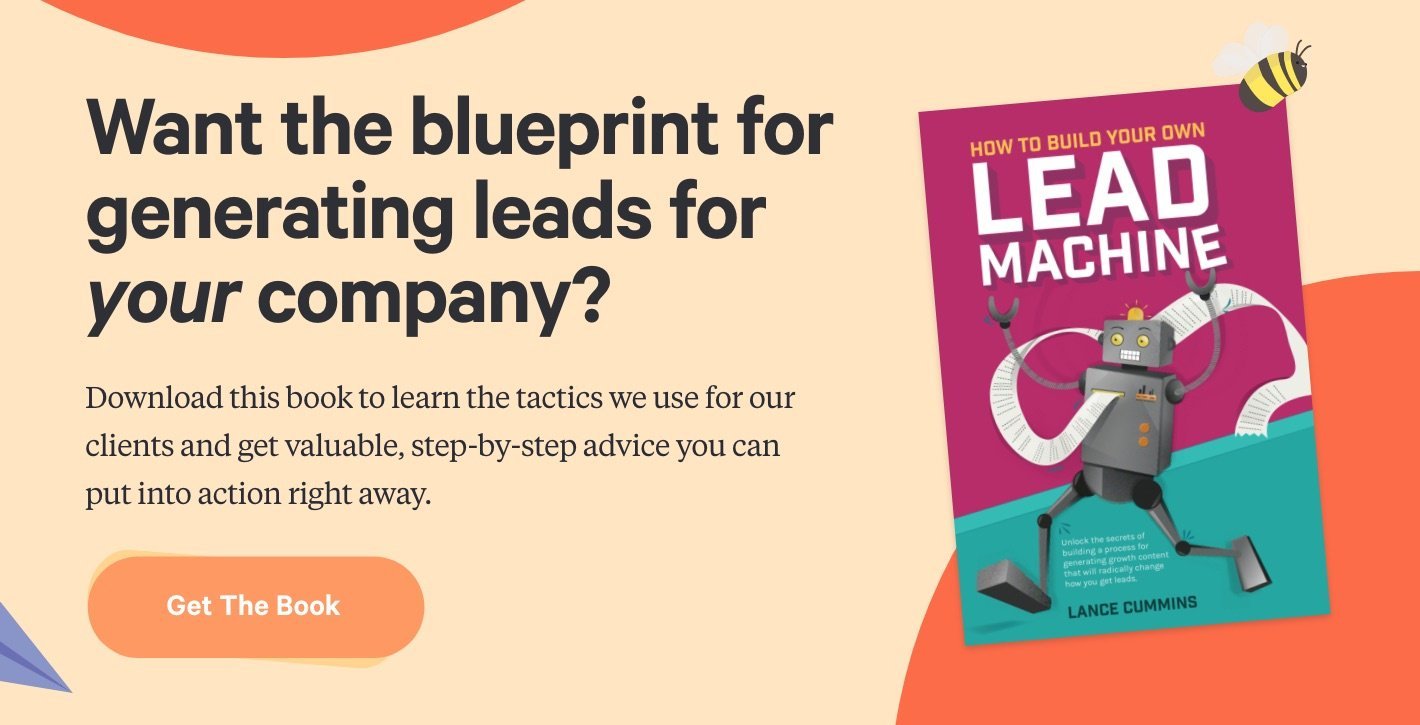Creating A Funnel For Your B2B Content Marketing Strategy


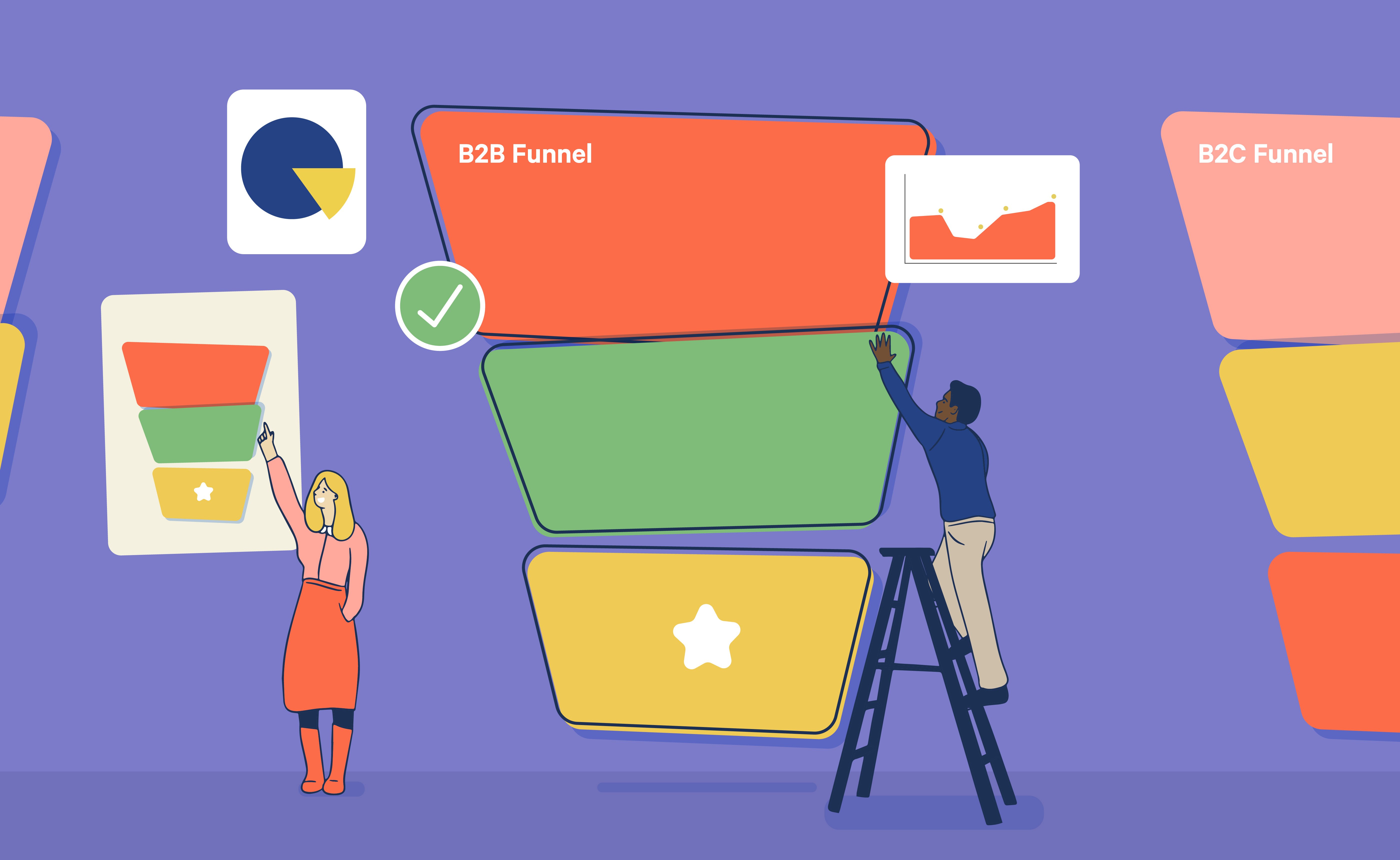
A successful B2B content marketing funnel comes down to two things:
- Knowing what type of content to produce for your customers.
- Knowing what strategy you as a company should employ around creating this content.
If you’re trying to build your website with B2B content marketing and struggling to create a consistent flow of leads, chances are you’re missing one (or both) of these steps. In this article, we’ll address both of these points, so you can learn how to create a sustainable B2B content marketing funnel that drives the right customers to your website.
But, first things first:
What is a marketing funnel?
A marketing funnel is the process of moving a prospective customer through the distinct phases of:
- Understanding they have a problem (top of funnel, or TOF)
- Introducing different options for solving their problems (middle of funnel, or MOF)
- Convincing them that the best solution is to become your customer (bottom of funnel, or BOF).
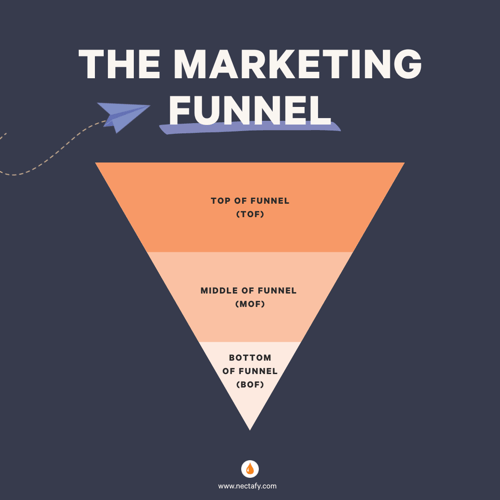
Top Of Funnel
Thinking about a physical funnel, it is designed so that the top—the widest area—can capture the maximum amount of liquid. The top of a marketing funnel acts the same way—providing the widest area to attract the largest number of leads. Top-of-funnel content provides your audience with helpful content, usually without ever mentioning your company’s name or product. If someone is interested in your top of funnel content, they might also be interested in your product—but for that particular reader at this particular stage, the link between the two is tenuous.
TOF content is not:
- Focused on your product or solution
- A sales pitch for your product
- A comparison of options for solving the problem
TOF Example: What are some best practices for bald head maintenance?
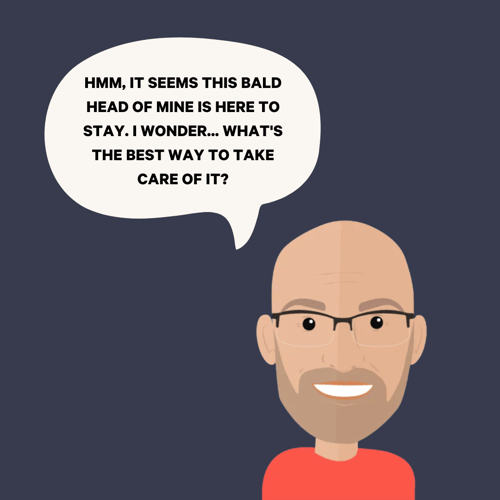
Middle Of Funnel
Moving from the top of the funnel toward the middle of the funnel, we move from an audience who is aware of their pain points and potential solutions, but they don’t really know much about your company. Right now, they are considering a variety of solutions or options for the problem in question.
MOF Example: I know there has to be some electric razor for bald heads. What other products could I use to solve my problem? Are there alternatives that are better?
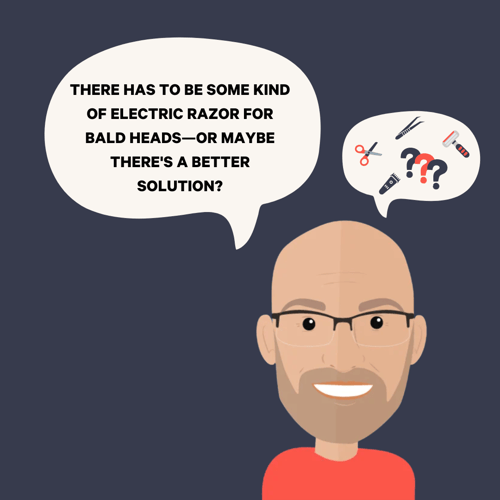
Bottom Of Funnel
At the bottom of the funnel are potential customers who know about your company and realize you could likely solve the problem; they are now trying to figure out if your solution is the best one for them. This is also called the “decision” phase: These people are comparing your company to the competition, and are preparing to make a purchasing decision. In BOF content, your goal is to convince the reader that they should choose you.
BOF Example: How much does this razor cost and what's the return policy?
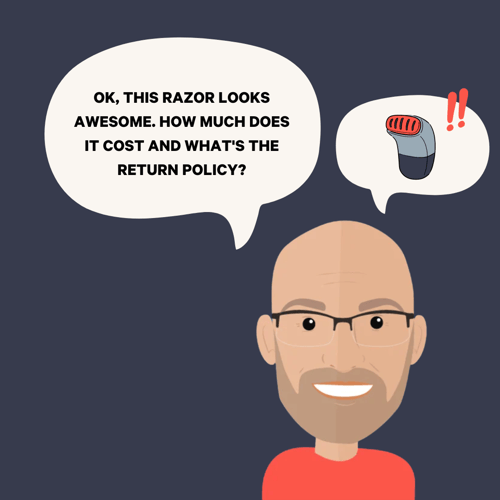
B2B vs. B2C Funnels: What are the differences?
The differences between B2B and B2C content marketing funnels are largely at the top.
For B2C content, you’re looking at quick, transactional sales that don’t require a lot of nurturing and are typically lower in monetary value than B2B sales. Your content funnel will be full of “showcasing” content—largely middle of the funnel—where you’re sharing case studies or examples of people whose problems have been solved by your product. B2C funnels are typically wider and shorter.
On the B2B side, you can expect longer, narrower sales funnels, with lots of TOF content, a little less MOF content, and even less BOF content. B2B marketing strategies require initially creating mostly top of funnel content, which introduces concepts relevant to your product or service in order to draw people to the way you can help them.
For B2B content marketing to succeed, it has to accurately reflect the mindset of the reader and focus on the challenges associated with their problem long before they ever consider your product or service.
Here are some of the differences between B2B and B2C marketing and sales funnels:
- The amount of content you’ll need to create at different stages of the marketing funnel is different.
- The type of content you’ll create is different.
- The length of time you’ll spend “nurturing” someone in the TOF and MOF stage is longer for B2B clients.
- The cost per acquisition of your B2B customer will be larger.
- You should expect to make more money per sale with a B2B customer.
In light of all of these things, you’ll want to both define your strategy carefully and allocate your budget accurately—you don’t want to invest in a lot of BOF content for your B2B company if you’re new to marketing, because most likely, no one will ever find your product!
At Nectafy, creating funnels for our B2B content marketing looks like this:
Our SaaS clients solve problems for people in certain industries. Their prospective clients may not currently be using software at all to solve their problems—they’re doing things the old-fashioned way, whether it’s manual data entry, tracking progress in spreadsheets, etc.
TOF content helps these people get better at what they’re doing the way they’re already doing it. You’re not launching your product on them, you’re giving them ways to make what they’re already doing better or introducing that there may be a problem with the way they’re currently doing it.
Through TOF content, you’re bringing to light the pain they already feel; you slowly introduce the idea that they need something new and different to address their challenge.
For the rest of this article, you’ll see how to practically create a consistent flow of leads using the marketing funnel.
How much could your company grow with growth content?
Calculate your expected growth in organic visits based on the average Nectafy client.
Get all these numbers in your inbox.
How To Create A Marketing Funnel For A B2B Business
In a simplified manner, here’s how to establish a content marketing funnel for your business. This is the framework for the actual process we use at Nectafy. I’ve pared it down so it can apply to any B2B business that isn’t currently using a marketing funnel and wants to try to adapt this methodology for themselves.
First, think about top of funnel content.
Consider your audience and their pain points. How can you contribute to solving a problem without asking them to buy a new product? That’s where you need to dig in. Get outside your own company, products, solutions, and sales tactics here—it’s easy to talk about yourself, but that won’t be good TOF content.
Come up with 20-30 ideas for things you can create content around, and then either start writing yourself, if you have a grasp on keywords, or hand the ideas off to a strategist who can identify some related keywords. (If you’re not sure about how to proceed with keywords, either ask us for help or read the content we’ve created about keyword research. Here’s a good place to start.)
Next, think about the alternatives for your product or service you can use to transition someone from the TOF to the MOF.
The ideas you brainstorm here will be turned into MOF blog posts, but they can also be used to create downloadable content like white papers. If someone visits your site and finds your TOF content valuable, they may want to download additional pieces of content. That’s helpful to you because you can get their name and contact information in exchange for the download. Besides white papers, some other examples of downloadable content are spreadsheets, checklists, calculators, reference charts, etc.
You can then begin introducing those people to your product or solution—which is your BOF.
When you start thinking in terms of the funnel, you can begin to visualize the many TOF things that are important to your audience, which will roll into middle- and bottom-of-funnel content as well. The more ideas you brainstorm, the more you’ll have to write about down the road.
Two Keystone Concepts To Help You Create Your B2B Content Funnel
1 Know your audience.
In creating your funnel content, you may tend to think along the lines of “What do I need to do to get this person to be a customer?” It’s time to reframe that thinking.
Effective content marketing requires you to think from the perspective of the person who will become your customer. If you show interest, ask questions, etc., people will find you more interesting. If you’re being genuinely useful and helpful, you will probably be successful as long as your content is paired with a strategy that is proven to drive traffic to your website.
2 Limit your audience.
It may seem counterintuitive, but it’s crucial to pinpoint exactly who you’re trying to help—this may mean limiting your audience. If you don’t have a super clear image (a persona), you need to start there. Here’s why: By trying to appeal to everyone, you’ll likely skip over some of the specific pain points of your best potential customers. In the end, you’ll run out of resources and waste your time talking to people who really don’t care about your business solutions.
For that reason, you need to narrow down your audience. We’ve seen so many startups try to “see who comes to them”; then they change their focus, pivot content, etc. It’s a waste of time and it renders their formerly helpful content useless.
Other articles on marketing funnels:
Even if your inbound marketing funnel is terrible right now, it doesn’t have to stay that way.
To summarize, here are four quick things you can start doing now to fix your B2B inbound marketing funnel:
- Make sure your buyer personas are indicative of your ideal customer.
- Review your content to make sure you have TOF, MOF, and BOF content—our workbook can help you do this in a visual way.
- Stop talking (and writing) only about your company, and write about your potential customers’ pain points instead.
- Or, if you need help getting on the right track, see if Nectafy can help. Schedule a call with Lance, our CEO, today.

